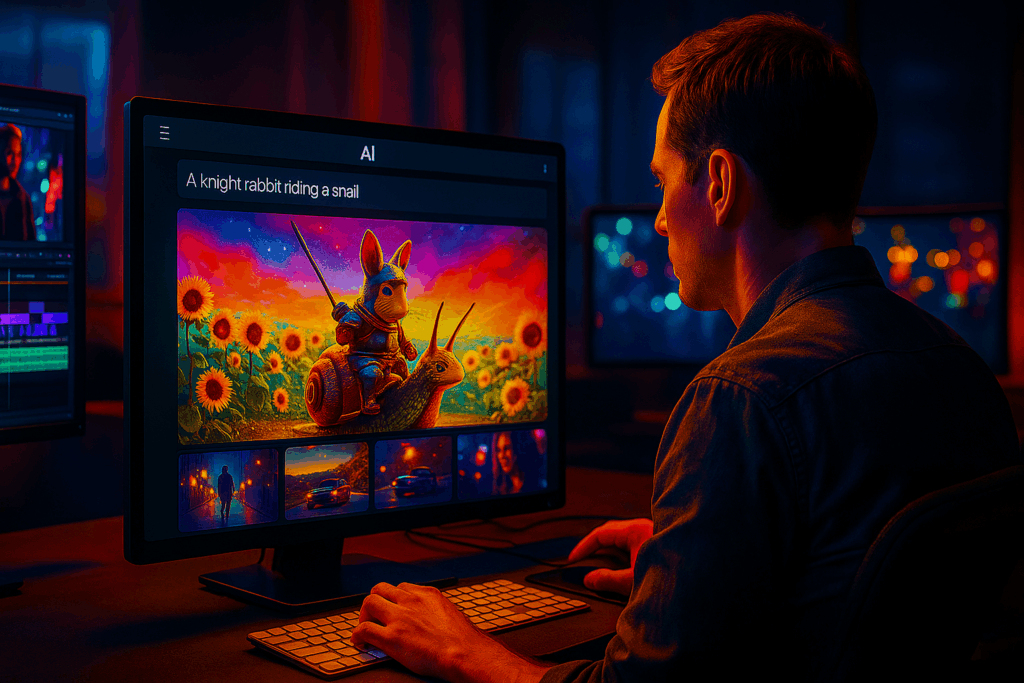Imagine creating an entire commercial—actors, lighting, camera, animation—without picking up a single piece of equipment. No studio. No crew. Just prompts.
That’s not science fiction anymore. In July 2025, the game officially changed.
Major players like OpenAI, Pika Labs, Runway, and Luma AI are accelerating the AI video race, pushing text-to-video models from toy experiments to commercial-ready tools. We’re now watching the beginning of a seismic shift in how content is made, marketed, and monetized.
And if you’re in media, marketing, education, entertainment, or branding—this changes everything.

🎬 The AI Video Arms Race: What Just Happened?
In the past month:
-
OpenAI’s Sora teased mind-blowing, photorealistic video clips from simple prompts (think: a cat exploring Mars that looks like a Netflix trailer).
-
Pika Labs dropped major updates with better scene control and continuity across multiple shots.
-
Runway Gen-3 is rolling out with upgraded temporal coherence (aka, videos that don’t glitch out halfway).
-
Luma AI entered the scene with lifelike 3D capture and text-to-video capabilities.
-
Meta and Google DeepMind are actively testing AI video internally and with creators.
This isn’t just hype. These platforms are gearing up to offer AI video tools to creators, marketers, and businesses—at scale.
📈 Why July 2025 Is the Tipping Point
July marks the start of Q3—and with it, a tsunami of content planning for:
-
Holiday marketing
-
Political ad ramp-ups
-
B2B product launches and demo videos
AI video is no longer a curiosity—it’s a competitive edge.

Agencies are swapping out traditional explainer videos with prompt-generated animations. Influencers are experimenting with “synthetic skits” powered by avatars. And some brands are testing AI ads without disclosing it—and still outperforming their traditional spots.
🧠 Real Use Cases Already in Motion
-
Solo creators are using Pika and ElevenLabs to generate brand-level videos with AI voiceovers and editing.
-
Educators are converting text-based lessons into animated explainers with Synthesia.
-
SaaS founders are building entire AI-generated product demos in under an hour.
The crazy part? This is the worst these tools will ever be. By Q4, they’ll be faster, cheaper, and embedded into your favorite platforms.
⚠️ What This Means for You (and the Industry)
Here’s the real-world disruption forecast:
| Industry | Disruption Level | Impact |
|---|---|---|
| Marketing | 🔥🔥🔥 | Mass adoption of AI ads, product videos, and story content. |
| Education | 🔥🔥 | AI-led teaching content, onboarding, training. |
| Entertainment | 🔥🔥🔥🔥 | Scripted AI content + avatar influencers. |
| SaaS / Tech | 🔥🔥 | Demos, customer success videos, and webinars go AI-native. |
And as tools like HeyGen, Colossyan, and Elai.io continue to improve, the barrier to entry gets even lower.
✅ How to Get Ahead Right Now
Here’s your cheat sheet for catching the wave early:
-
Test the tools: Try Runway, Pika, or Luma AI for fast video generation.
-
Repurpose your best content: Use Vidyo.ai or Descript to turn blogs or podcasts into video.
-
Create ad variants with AI actors: Tools like Synthesia and HeyGen let you do this fast.
-
Follow updates on platforms like YouTube’s AI Studio and Meta’s LLaMA-powered tools.
And most importantly: Experiment while it’s still novel—your early content will stand out more than it will a few months from now.
✍️ Prompt or Perish
The same way smartphones democratized photography, AI is democratizing video.
But just like owning a camera doesn’t make you a filmmaker, AI tools alone won’t make you a storyteller.
The real skill is now in prompt writing, creative vision, and emotional hooks—and that’s something no model can replicate just yet.
So don’t wait for perfect.
Start playing now.
Before everyone else catches on.
